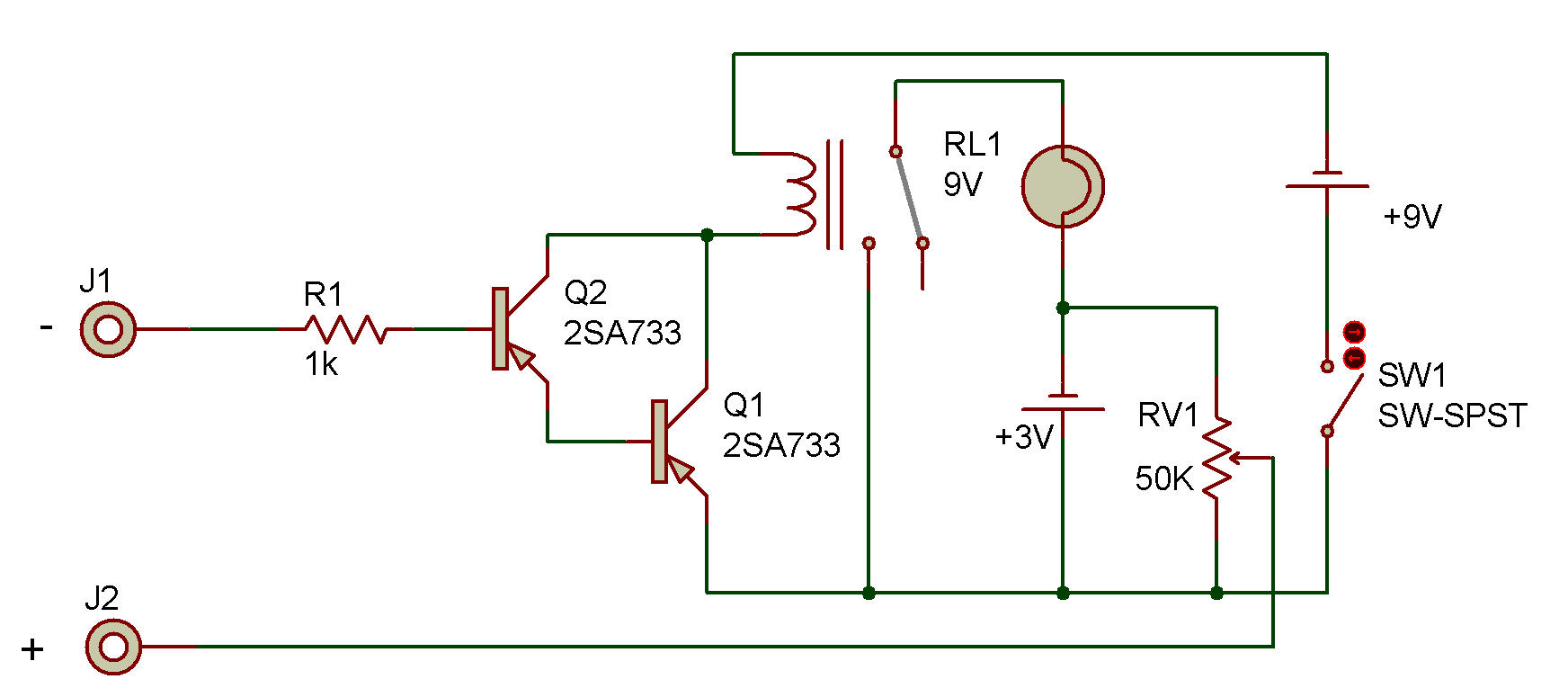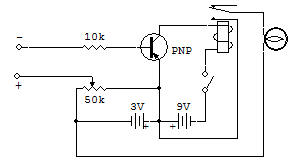

Supersensitive Relay or Sensitive Electronic Voltmeter

In this project you'll construct and test a very sensitive electronic voltmeter. The high gain of a Transistor and the output of a potentiometer (Control) are coupled together is such a way that very low voltages (much less than one volt) can be sensed with this circuit. This will allow you to test such things as thermocouples, solar cells, dissimilar metals which are generating a voltage (like the Coin Battery see Electric power Section), and much more.
Operation is as follows:
1. Short-circuit the Probes together and adjust the Control to minimum (to de-energize the relay and turn OFF the Lamp).
2. Slowly increase the Control until the Relay is energized and Lamp is ON. Record the Control dial setting ____. This point on the dial represents zero (0) external voltage.
3. Reduce the Control to minimum and connect the probes across the voltage to be measured. Observe proper polarity.
4. Slowly increase the Control from minimum until the Lamp lights.
The dial setting will tell you the following:
a. If the Lamp lights at "0" or very low Control settings, the voltage is quite high (typically about 0.3 volt).
b. If the Lamp lights near but below the setting of Step 2, the voltage value is very low. The closer this setting is to the number you recorded in Step 2, the lower the voltage.
c. If the Lamp lights on a setting of Step 2, the voltage is zero.
d. If the Control setting must be higher than Step 2 to get the lamp to light, the polarity is probably reversed. Change positions of the leads.
Now try measuring such things as the Solar Cell, Coin Battery and a thermocouple, if you have one. Operating theory for this circuit is included in many other projects, so we won't repeat it here. Have fun!
Another Version

